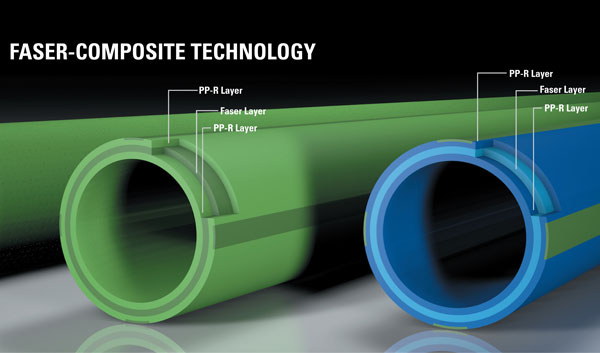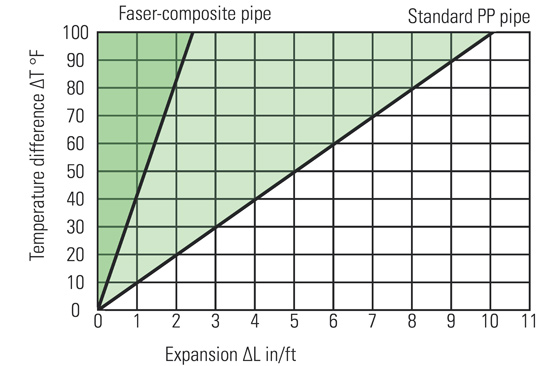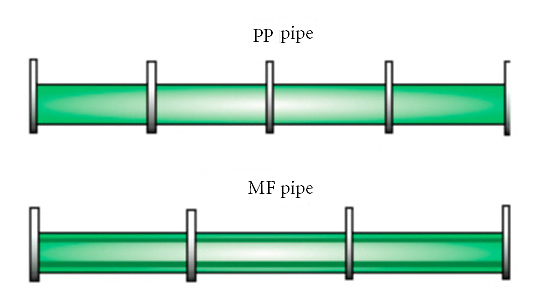Polypropylene-Random (PP-R) Piping Systems Serve Multiple Applications
Multilayer Faser (MF) Technology
In order to increase maximum operating temperatures, a leading manufacturer has developed a multilayer faser (MF) technology process. The result is an extruded middle layer in the pipe that is a mixture of glass fibers and resin that allows the pipe to remain rigid at higher temperatures and significantly reduce thermal expansion. This multilayer faser product does not require any modification to the fusion process. Nor does the low concentration of glass fibers in the pipe interfere with the fusion process or the recycling process. In some cases, the glass-fiber reinforced PP may be sorted for recycling separately from non-reinforced PP.

Image courtesy of Aquatherm
Typical examples of multilayer faser layers that control PP-R pipe expansion.
With multilayer faser (MF) technology, PP-R pipes have thermal expansion properties comparable to metal pipe. The PP-R material can absorb the stresses created due to thermal expansion, and as such can be controlled much more readily than similar piping layouts using metal. PP-R pipes can be buried without any expansion controls or thrust blocking restraints (supports at the joints), as the weight of the soil will restrict any movement. Anchors may be required at certain locations to ensure no movement of the pipe, such as lateral movement where the pipe enters a building foundation.

Chart courtesy of Aquatherm
Compared with standard plastic pipe, multilayer faser pipe has significantly lower linear expansion.
Additional advantages of using MF technology is that it maintains a higher internal pipe diameter—consequently a higher SDR than an equivalent non-MF pipe—which allows a higher flow rate; requires fewer supports because the pipe is more rigid; and has less weight than metal pipe.

Image courtesy of Aquatherm
Compared with standard PP-R, PP-R pipe with multilayer faser technology requires fewer supports.









